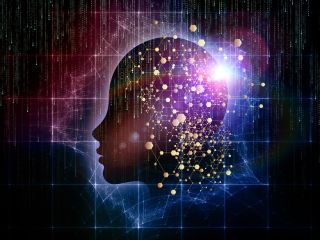Philosophy
An Overview of the Leading Theories of Consciousness
Organizing and comparing the major candidate theories in the field.
Updated October 28, 2023 Reviewed by Davia Sills
Key points
- Leading theories of consciousness include HOT, GWT, IIT, re-entry, and predictive processing theories.
- Other well-developed theoretical approaches to consciousness involve attention, learning, and affect.
- Many theories seek to solve the “hard problem” of consciousness, but not everyone agrees the problem exists.

This post is Part I of a series.
The field of consciousness studies has come of age. Prior to the 1990s, theories of consciousness were more of a philosophical pursuit than a serious scientific one. This was largely because scientists considered the domain of subjective experience—which is what consciousness fundamentally is—to be, well, too subjective. It just didn’t seem amenable to objective empirical study using the scientific method. And the whole concept of consciousness was considered too slippery and vague.
Quicksand?
Even now, in my own very practically-oriented clinical field of psychiatry—one which relies heavily on subjective self-report by patients—when I talk with colleagues about my interest in the science of consciousness and tell them about the scientific conferences focused on it, which I like to attend, I am met with comments such as this one from a recent email exchange: “You brave, brave man, you—willing to wade into the bottomless pit of quicksand that is consciousness studies… I run, screaming, in the opposite direction.”
My response to this quip was to point out that a quick glance at the program of the particular conference I had just returned from would attest to the fact that this field has matured into a rigorous and rapidly developing sphere of neuroscience, with considerably less quicksand than before. An additional criticism could legitimately be that the topic of consciousness has attracted a huge number of mystical woo practitioners, but even if 99 percent of the field were comprised of pseudoscience, this conference and the large, vibrant scientific community it represents would certainly be the other 1 percent.
The hard problem
Inevitably, attempts to scientifically explain consciousness run up against the “explanatory gap” or what is called the “hard problem” of consciousness—the problem of subjective experience: Why it feels like something to be conscious.1 Or, as the philosopher Thomas Nagel famously formulated it: “something that it is like to be.”2 The so-called “easy problems” concern questions like how the brain processes information, how different sensory inputs are integrated, how memories are formed, and how we can selectively focus our attention. They are “easy” relative to the hard problem in that they are more scientifically tractable.
Correlates vs. explanations
In the early decades of the revival of scientific interest in studying consciousness, research focused on identifying the “neural correlates of consciousness” (NCCs), which are the essential neural events needed to produce conscious states. That search concentrated on brain states closely tied to consciousness. Over time, more attention has been directed toward developing theories of consciousness (ToCs). While the NCC approach looks for correlations between brain activity and consciousness, ToCs seek explanatory links between neural mechanisms and aspects of consciousness.
A proliferation of theories
Presently we are still at a relatively early stage in the scientific study of consciousness. At this point, there are a great many theories of consciousness proliferating and competing with each other. Those theories sometimes seem to talk past each other as they explore vastly different approaches to the problem. Attempting to understand the various ToCs and how they contrast with one another can be quite overwhelming, even for those with a good deal of familiarity with the field.
In recent years, there have been a number of academic papers attempting to catalogue and compare the various theories.3 Still, for the general reader, it can all be quite confusing and impenetrable. This five-part blog series will attempt to make some of the major theories more accessible to a general, educated readership. Only a few major theories will be covered here. Several others have already been previously covered in my other blog posts.4
Four leading contenders
Among the most helpful recent academic journal articles comparing different theories of consciousness is a 2022 paper by Anil Seth and Tim Bayne.5
Seth and Bayne focus their review mainly on the following four prominent theoretical approaches to consciousness. I will briefly summarize these here in simple terms:
- Higher-order theories (HOTs): These theories propose that thoughts become conscious when basic perceptions (“lower-order” representations) become re-represented as higher-order representations at higher levels of the brain, specifically in the prefrontal cortex.
- Global workspace theories (GWTs): According to these theories, perceptions, thoughts, emotions, etc. become conscious when they gain access to a “workspace,” or to apply another analogy, when they make it into the “spotlight”—as if the mind were a theater where conscious thought is the activity in the spotlight on the stage at a given moment (except that, unlike in the analogy, the actual workspace in the brain is not localized but rather is distributed across the frontal and parietal regions of the cortex, according to the theory).
- Integrated information theory (IIT): This theory is about how parts of a brain interact to create a unified experience. Consciousness is theorized to be related to how much information is integrated among the different parts of the brain. IIT tries to mathematically measure this. The more information that is connected and integrated, the more conscious the system is thought to be. The theory suggests that not just brains but any complex system with the right level of interconnectedness and integration of information could exhibit consciousness, with simpler systems manifesting only an insignificant modicum of consciousness. IIT attempts to explain the quality of conscious experience, suggesting that the unique pattern of relationships between the elements of the system is what defines a particular conscious experience.
- Re-entry and predictive processing theories: The core claim of re-entry theory and predictive processing is that conscious mental states are associated with top-down signaling. Top-down signaling refers to the process by which higher-level brain regions send information, expectations, or context to lower-level brain regions. This communication helps shape how the brain perceives and interprets bottom-up information received via its sense organs from the world around it. (Predictive processing theories are not specifically theories of consciousness but are more general accounts of brain function that can be used to formulate ideas about the properties of consciousness.)
Other strong contenders
Besides the above four categories of theories, Seth and Bayne also acknowledge other well-developed approaches to consciousness—ones that involve attention, learning, and affect:
Theoretical approaches focused on attention:
- Attention schema theory (AST): This is discussed in my post “Is Consciousness an Illusion?”
Theoretical approaches focused on learning:
- Unlimited associative learning (UAL): This is discussed in my post “Learning May Be the Key to the Evolution of Consciousness.” UAL arguably has the strongest evolutionary grounding of all the theories.6
- Other learning-based theories overlap with some theories described under the four main sets of theories listed above, such as Axel Cleeremans’ version of higher-order theory (HOT) and Victor Lamme’s local recurrency account.7
- Learning-based theories are also closely related to “selectionist” approaches, which ground consciousness in evolutionary-like dynamics within and between neuronal populations (referring to Gerald Edelman’s Neural Darwinism theory).8
Affect-based theories:
- Damasio’s “self comes to mind” theory: According to this theory, consciousness depends on interactions between homeostatic routines and multilevel interoceptive maps, with affect and feeling at the core.9 This is discussed in my posts “Are We All Zombies?” and “The Brain as a Prediction Machine: The Key to the Self?”
- Some proposals mix an affect-based emphasis with predictive processing to ground conscious experiences in control-oriented interoceptive predictions. This refers to the way the brain controls the body’s internal organs and physiological parameters by making predictions about what they should be. For example, the brain predicts what the body’s blood glucose level should be and then sends signals to adjust that state if it deviates from predictions (Anil Seth’s “beast machine” theory—discussed in my posts “The Brain as a Prediction Machine: The Key to Consciousness?” and “The Key to the Self?” and Lisa Feldman Barrett’s theory10).
- Some affect-based theories consider cortical mechanisms to be unnecessary for consciousness, suggesting instead that the mechanisms of consciousness are located in the brainstem (e.g., the theories of Mark Solms11 and Bjorn Merker12)
In future parts of this blog series, we will discuss HOTs, GWTs, IIT, re-entry, and predictive processing theories, following which we will be in a better position to judge whether the field is any closer to solving the “hard problem” of consciousness, or whether there really is such a problem at all.
References
1. The subjective quality of a conscious experience is also referred to as “qualia” – for example the redness of red. Is the experience of seeing redness the same for you as for me? We assume it is, but there’s no really objective way to tell. And why and how should the visual experience even have this “redness” quality at all, as the product of electrical and chemical signals reverberating in our physical brains? The answers to these questions are not self-evident.
2. Nagel stated: “An organism has conscious mental states if and only if there is something that it is like to be that organism – something that it is like for the organism.” [Nagel, T. (1974). What Is It Like to Be a Bat? The Philosophical Review, 83(4), 435-450.]
3. E.g:
-- Northoff, G., & Lamme, V. (2020). Neural signs and mechanisms of consciousness: Is there a potential convergence of theories of consciousness in sight?. Neuroscience and biobehavioral reviews, 118, 568–587. https://doi.org/10.1016/j.neubiorev.2020.07.019
-- Doerig, A., Schurger, A., & Herzog, M. H. (2021). Hard criteria for empirical theories of consciousness. Cognitive neuroscience, 12(2), 41–62. https://doi.org/10.1080/17588928.2020.1772214
-- Del Pin, S. H., Skóra, Z., Sandberg, K., Overgaard, M., & Wierzchoń, M. (2021). Comparing theories of consciousness: why it matters and how to do it. Neuroscience of consciousness, 2021(2), niab019. https://doi.org/10.1093/nc/niab019
-- Signorelli, C. M., Szczotka, J., & Prentner, R. (2021). Explanatory profiles of models of consciousness - towards a systematic classification. Neuroscience of consciousness, 2021(2), niab021. https://doi.org/10.1093/nc/niab021
-- Promet, L., & Bachmann, T. (2022). A comparative analysis of empirical theories of consciousness. Psychology of Consciousness: Theory, Research, and Practice. Advance online publication. https://doi.org/10.1037/cns0000341
-- Yaron, I., Melloni, L., Pitts, M., & Mudrik, L. (2022). The ConTraSt database for analysing and comparing empirical studies of consciousness theories. Nature human behaviour, 6(4), 593–604. https://doi.org/10.1038/s41562-021-01284-5
-- Seth, A. K., & Bayne, T. (2022). Theories of consciousness. Nature reviews. Neuroscience, 23(7), 439–452. https://doi.org/10.1038/s41583-022-00587-4
4. Some of my previous posts covering theories of consciousness are listed later in this article. In addition, see the five-part series What Actually Is Consciousness, and How Did It Evolve? (parts 2, 4 and 5 of that series are mentioned elsewhere in the current post). See also Mind-Body Problem: How Consciousness Emerges from Matter. And older posts such as How Could Mind Emerge From Mindless Matter? and What Actually Is a Thought? And How Is Information Physical? Among others.
5. Seth, A. K., & Bayne, T. (2022). Theories of consciousness. Nature reviews. Neuroscience, 23(7), 439–452. https://doi.org/10.1038/s41583-022-00587-4.
6. Another theory of consciousness with a strong evolutionary grounding is Feinberg and Mallatt's theory, which was previously reviewed by me but was not mentioned in Seth & Bayne's article. Feinberg and Mallatt's theory is broadly in agreement with UAL.
7. Cleeremans, A., Achoui, D., Beauny, A., Keuninckx, L., Martin, J. R., Muñoz-Moldes, S., Vuillaume, L., & de Heering, A. (2020). Learning to Be Conscious. Trends in cognitive sciences, 24(2), 112–123. https://doi.org/10.1016/j.tics.2019.11.011; Lamme V. A. (2006). Towards a true neural stance on consciousness. Trends in cognitive sciences, 10(11), 494–501. https://doi.org/10.1016/j.tics.2006.09.001.
8. According to this theory, consciousness depends on re-entrant interactions reflecting a history of value-dependent learning events shaped by selectionist principles.
9. The term interoceptive refers to perception of sensory signals that originate from within the body, especially in the gut and other internal organs, as opposed to exteroceptive, which refers to stimuli from the external environment.
10. Barrett, L. F. The theory of constructed emotion: an active inference account of interoception and categorization. Soc. Cogn. Affect. Neurosci. 12, 1833 (2017).
11. Solms, M. The Hidden Spring: A Journey to the Source of Consciousness (Profile Books, 2021). Solms' theory is congruent with the important work on affective neuroscience done by Jaak Panksepp and is also congruent with the Free Energy Principle by the influential neuroscientist Karl Friston, both of whom Solms collaborated with. Solms' theory also incorporates predictive processing.
12. Merker, B. Consciousness without a cerebral cortex: a challenge for neuroscience and medicine. Behav. Brain Sci. 30, 63–81; discussion 81–134 (2007).




